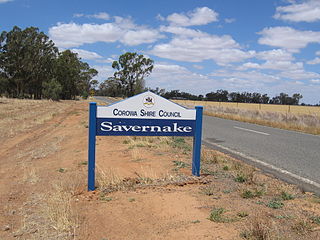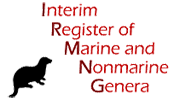See also
| This disambiguation page lists articles associated with the title CSIX. If an internal link led you here, you may wish to change the link to point directly to the intended article. |
CSIX may refer to:
The common switch interface (CSIX) is a physical interface specification between a traffic manager and a switching fabric. It was developed by the Network Processing Forum to:
| This disambiguation page lists articles associated with the title CSIX. If an internal link led you here, you may wish to change the link to point directly to the intended article. |
The Commonwealth Scientific and Industrial Research Organisation (CSIRO) is an independent Australian federal government agency responsible for scientific research. Its chief role is to improve the economic and social performance of industry for the benefit of the community.

The Australia Telescope Compact Array (ATCA) is a radio telescope operated by CSIRO at the Paul Wild Observatory, twenty five kilometres (16 mi) west of the town of Narrabri in Australia.
This article is on the astronomer John Bolton. For other people named "John Bolton," see John Bolton (disambiguation).

The Canberra Deep Space Communication Complex (CDSCC) is an Earth station in Australia located at Tidbinbilla in the Australian Capital Territory. Opened in 1965, the complex was used for tracking the Apollo Lunar Module. It is part of the Deep Space Network of NASA's Jet Propulsion Laboratory (JPL), managed in Australia by the Commonwealth Scientific and Industrial Research Organisation (CSIRO).
The Network Processing Forum (NPF) is an industry forum that was organized to facilitate and accelerate the development of next-generation networking and telecommunications products based on network processing technologies. The NPF was merged into the Optical Internetworking Forum in June 2006. The NPF produces Hardware, Software, and Benchmark Interoperability Agreements. These agreements enable equipment manufacturers to lower their time to market and development cost by enabling a robust, multi-vendor ecosystem. It also lowers the total cost of ownership of systems based on their interoperability agreements by enabling investments in test and verification infrastructure as well as enabling competition.

The Flora of Australia is a 59 volume series describing the vascular plants, bryophytes and lichens present in Australia and its external territories. The series is published by the Australian Biological Resources Study who estimate that the series when complete will describe over 20 000 plant species.
The dwarf catshark is a catshark of the family Scyliorhinidae, found only off the coast of Western Australia, at depths between 200 and 400 m. Its length is up to 44 cm.
CSIRO Publishing is an Australian-based science and technology publisher. It publishes books, journals and magazines across a range of scientific disciplines, including agriculture, chemistry, plant and animal sciences, natural history and environmental management. It also produces interactive learning modules for primary school students and provides writing workshops for researchers.

Savernake is a village and rural community in the southern Riverina region of New South Wales, Australia. The village is located on the Riverina Highway, east of Berrigan, and in the Federation Council local government area.
The Australian Soil Classification is the classification system currently used to describe and classify soils in Australia. It is a general-purpose, hierarchical classification system, and consists of five categorical levels from the most general to the most specific: order, suborder, great group, subgroup, and family. An interactive, online key is available. The Australian Soil Classification supersedes other classification systems previously developed for Australian soils, including the Factual Key (1960) and the Handbook of Australian Soils (1968).
Cienna is red Australian wine grape variety first bred in 2000. It is a mix between the Spanish wine grape Sumoll and Cabernet Sauvignon grape. This grape was initially created in 1972 by CSIRO. The aim was to produce high quality grapes suited for Australian conditions. One of the most notable wineries that produces a light-style, light-alcohol Cienna wine is Brown Brothers from Victoria, Australia.
The De Warenne Academy is a secondary school with academy status on Gardens Lane in Conisbrough, South Yorkshire, England.
Melco Holdings Inc. is a family business founded by Makoto Maki in 1975 and is located in Japan. The company's most recognizable brand is Buffalo Inc.
Richard Schodde, OAM is an Australian botanist and ornithologist.

The Australian Square Kilometre Array Pathfinder (ASKAP) is a radio telescope array located at Murchison Radio-astronomy Observatory (MRO) in the Australian Mid West. ASKAP consists of 36 identical parabolic antennas, each 12 metres in diameter, working together as a single instrument with a total collecting area of approximately 4,000 square metres.
Ian James Mason is an Australian ornithologist and taxonomist who is Senior Collection Manager for the Australian National Wildlife Collection. He is an authority on oology.
Lyndley Alan Craven was a botanist who became the Principal Research Scientist of the Australian National Herbarium.
Doncaster Collegiate Sixth Form "DC6" is a sixth form college with academy status, at Doncaster, South Yorkshire, England.

The Interim Register of Marine and Nonmarine Genera (IRMNG) is a taxonomic database containing the scientific names of the genus, species, and higher ranks of many plants, animals and other kingdoms, both living and extinct, within a standardized taxonomic hierarchy, with associated machine-readable information on habitat and extant/fossil status for the majority of entries. The database aspires to provide complete coverage of accepted genus names across all kingdoms, with a subset only of species names included as a lower priority. In its March 2019 release, IRMNG contained 490,095 genus names, of which 236,514 were listed as "accepted", 120,194 "unaccepted", 7,391 of "other" status i.e. interim unpublished, nomen dubium, nomen nudum, taxon inquirendum or temporary name, and 125,996 as "uncertain". The data originate from a range of print, online and database sources, and are reorganised into a common data structure to support a variety of online queries, generation of individual taxon pages, and bulk data supply to other biodiversity informatics projects. IRMNG content can be queried and displayed freely via the web, and download files of the data down to the taxonomic rank of genus as at specific dates are available in the Darwin Core Archive (DwC-A) format. The data include homonyms, including both available and selected unavailable names.